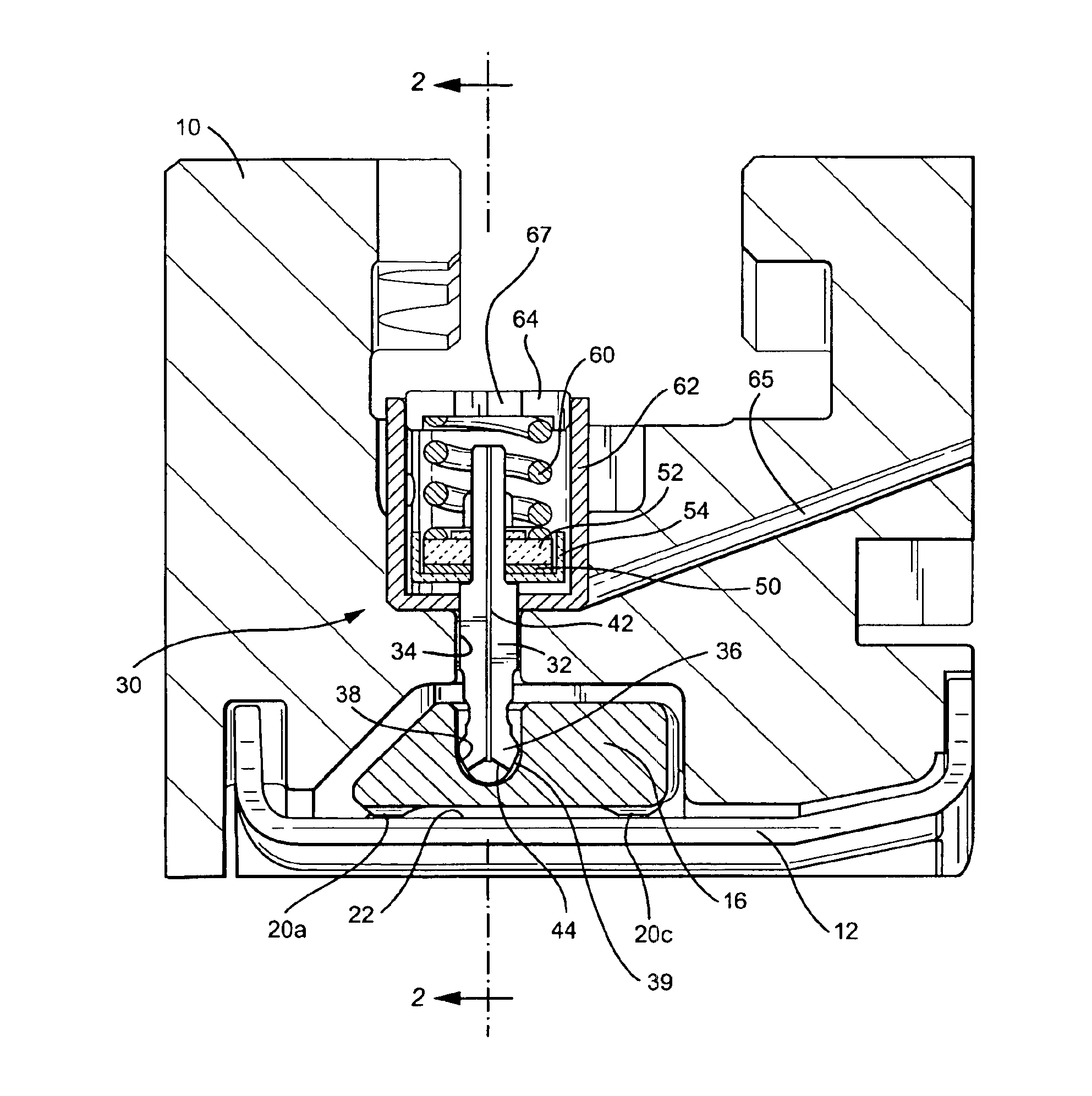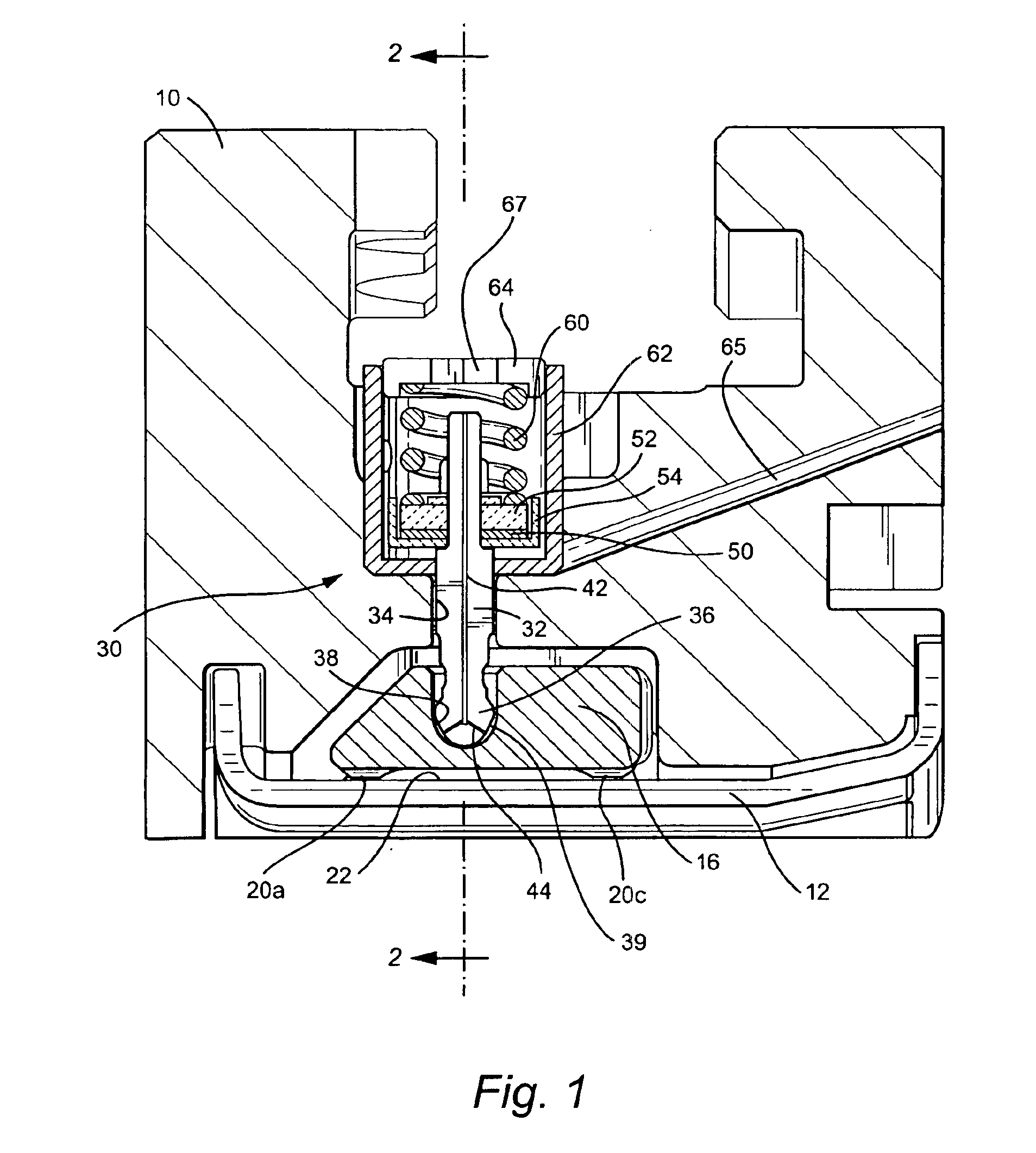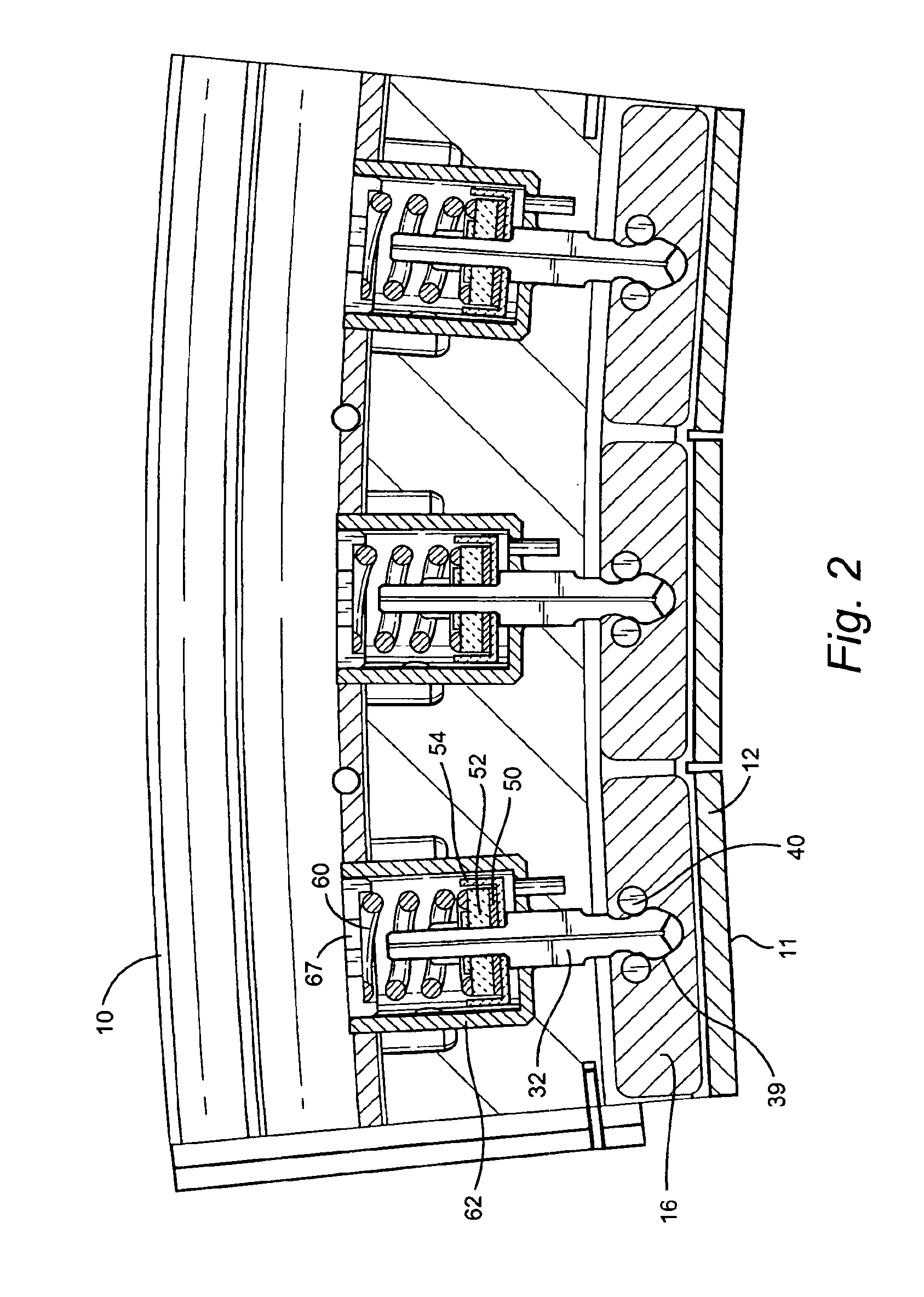Spring mass damper system for turbine shrouds
a damper system and turbine shroud technology, applied in the field of damping systems, can solve the problems of difficult attachment and ceramic composites, and achieve the effects of reducing heat load on the damper block, enhancing the long-term wear capability of the coupling, and reducing the damage of the vibratory respons
- Summary
- Abstract
- Description
- Claims
- Application Information
AI Technical Summary
Benefits of technology
Problems solved by technology
Method used
Image
Examples
Embodiment Construction
[0010]Referring now to FIGS. 1 and 2, there is illustrated an outer shroud block or body 10 mounting a plurality of shrouds 12. FIG. 1 is a view in a circumferential direction and FIG. 2 is a view in an axial forward direction opposite to the direction of flow of the hot gas stream through the turbine. As seen from a review of FIG. 2, the shroud block 10 carries preferably three individual shrouds 12. It will be appreciated that a plurality of shroud blocks 10 are disposed in a circumferential array about the turbine axis and mount a plurality of shrouds 12 surrounding and forming a part of the hot gas path flowing through the turbine. The shrouds 12 are formed of a ceramic composite, are secured by bolts, not shown, to the shroud blocks 10, and have a first inner surface 11 (FIG. 2) in contact with the hot gases of the hot gas path.
[0011]The damper system of the present invention includes a damper block / shroud interface, a damper load transfer mechanism and a damping mechanism. The...
PUM
 Login to View More
Login to View More Abstract
Description
Claims
Application Information
 Login to View More
Login to View More - R&D
- Intellectual Property
- Life Sciences
- Materials
- Tech Scout
- Unparalleled Data Quality
- Higher Quality Content
- 60% Fewer Hallucinations
Browse by: Latest US Patents, China's latest patents, Technical Efficacy Thesaurus, Application Domain, Technology Topic, Popular Technical Reports.
© 2025 PatSnap. All rights reserved.Legal|Privacy policy|Modern Slavery Act Transparency Statement|Sitemap|About US| Contact US: help@patsnap.com



